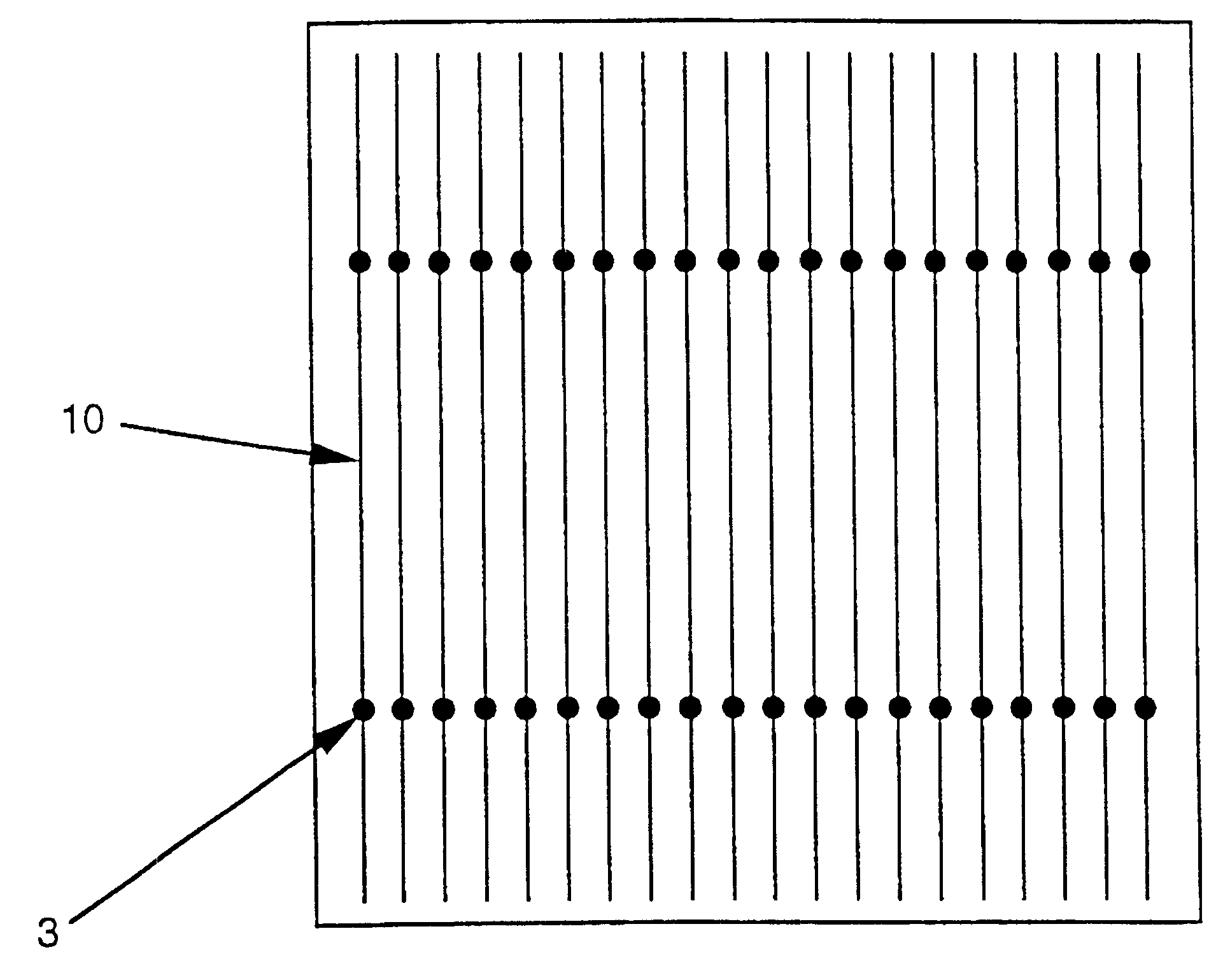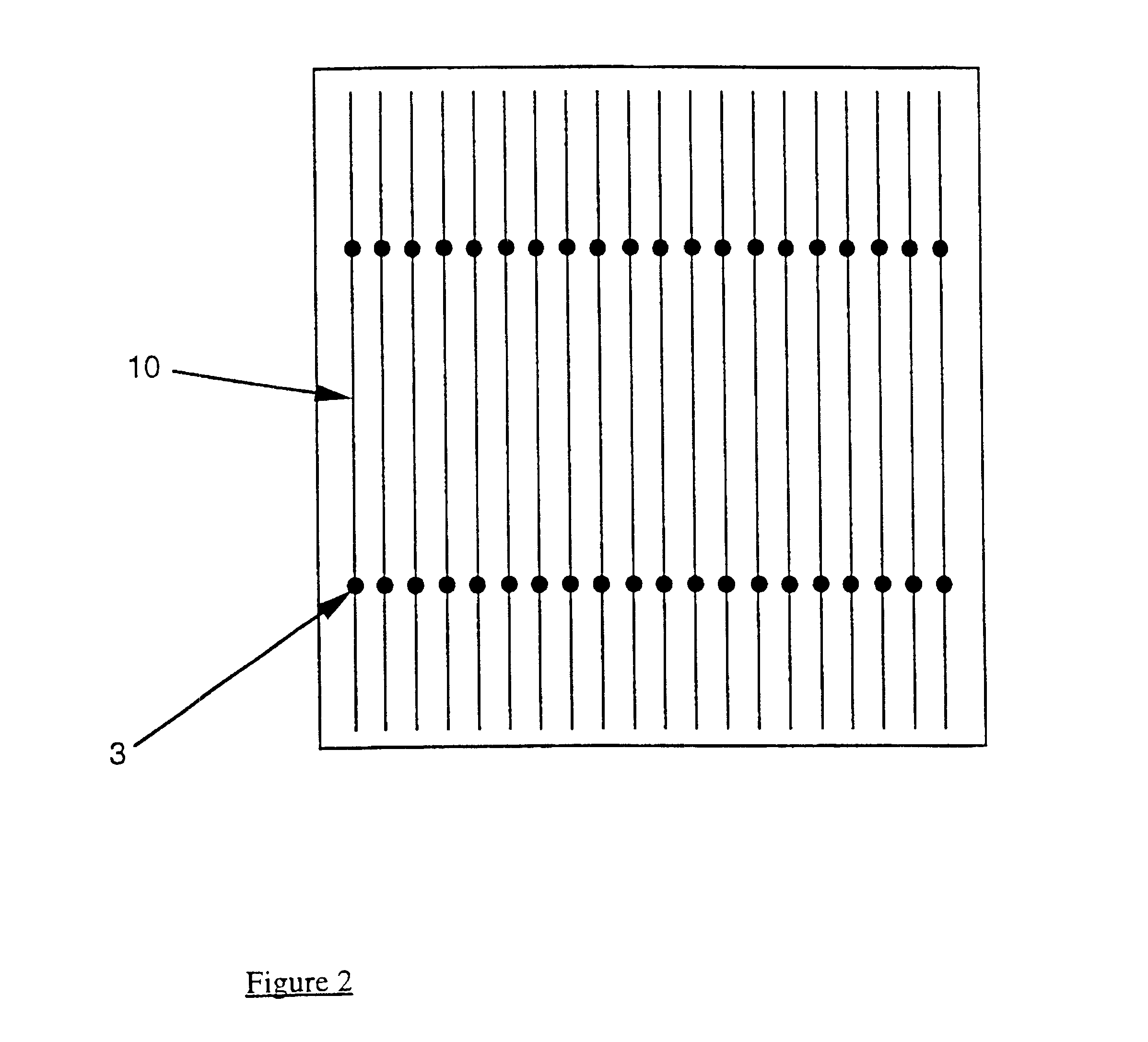Solar cell and process of manufacturing the same
a solar cell and process technology, applied in the field of solar cell and process of manufacturing the same, can solve the problems of inapplicability to most solar grade materials, which generally have short diffusion lengths, and the cost of photolithography is high, difficult to implement into industrial solar cell production, and disadvantages of photolithography also apply
- Summary
- Abstract
- Description
- Claims
- Application Information
AI Technical Summary
Problems solved by technology
Method used
Image
Examples
Embodiment Construction
The present solar cell can be described as a parallel connection of two diodes, forming a back contacted double junction solar cell. The current collected by metal fingers at the front surface of the cell is lead to an external contact at its back surface through a limited number of vias. A junction present at the back surface will increase the collection volume of generated carriers, thus increasing the output current of the device.
In the following description, a method to produce solar cells with homogeneous emitters is disclosed with reference to FIG. 1.
The processing sequence for a back-contacted solar cell with a double junction is according to a preferred embodiment as follows:
The starting material is a p-type substrate 1 having a front surface 2 and a back surface 3 as represented on FIG. 1a.
On FIG. 1b, a number of vias 4 are machined through the substrate. By using a suitable technique, the opening angles .alpha. of the vias can be varied. Possible techniques for machining h...
PUM
 Login to View More
Login to View More Abstract
Description
Claims
Application Information
 Login to View More
Login to View More - Generate Ideas
- Intellectual Property
- Life Sciences
- Materials
- Tech Scout
- Unparalleled Data Quality
- Higher Quality Content
- 60% Fewer Hallucinations
Browse by: Latest US Patents, China's latest patents, Technical Efficacy Thesaurus, Application Domain, Technology Topic, Popular Technical Reports.
© 2025 PatSnap. All rights reserved.Legal|Privacy policy|Modern Slavery Act Transparency Statement|Sitemap|About US| Contact US: help@patsnap.com



